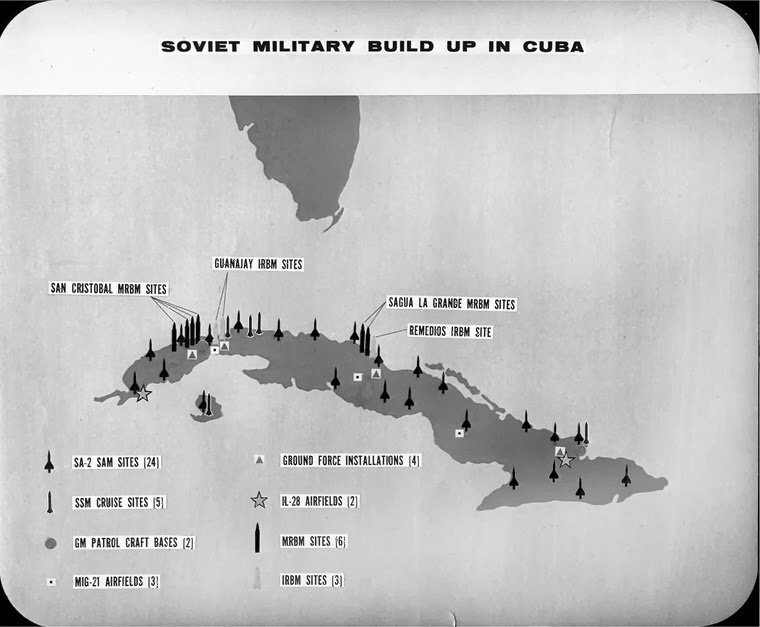October 16th in the Cuban Missile Crisis

The “Thirteen Days” Begin
October 16 was the first of the “Thirteen Days” Bobby Kennedy referred to in the title to his book about the Cuban Missile Crisis. This was the day when the Kennedy administration learned of the presence of strategic nuclear rockets on Cuba.
Art Lundahl, director of the National Photographic Interpretation Center, brought his photos and briefing boards to the White House and spent the morning briefing the National Security Advisor, McGeorge Bundy; the Attorney General, Robert F. Kennedy and others. At noon, the President convened a meeting of what came to be known as the Executive Committee for National Security (ExComm) and listened as Lundahl told him about the missile sites.
Kennedy was furious by the revelations, and felt personally betrayed. Still, JFK resisted the general consensus in the room, which was to immediately order the USAF to bomb the sites into smithereens (with conventional bombs.) Even at the beginning of the crisis, Kennedy sought a way to stall for time.
As a side note, and unbeknownst to almost everyone, JFK had ordered a recording system to be installed in the Cabinet room. As a result, virtually all ExComm meetings were recorded; these recording were released to researchers and the public only in the last decade or so.
You can listen to some of the actual recordings here. For transcripts of the recordings, look here.
Guest post by Douglas Niles, author of Final Failure: Eyeball to Eyeball, an alternate history of the Cuban Missile Crisis. Doug and I co-authored three alternate history military thrillers: Fox on the Rhine, Fox at the Front, and MacArthur’s War. He is also known for his fantasy novels and is an award-winning game designer.
Follow the inside story of the Cuban Missile Crisis as it evolves day by day from now through October 28!
Read: Yesterday Tomorrow Beginning of the Series
(Image: Briefing Slide for ExComm)